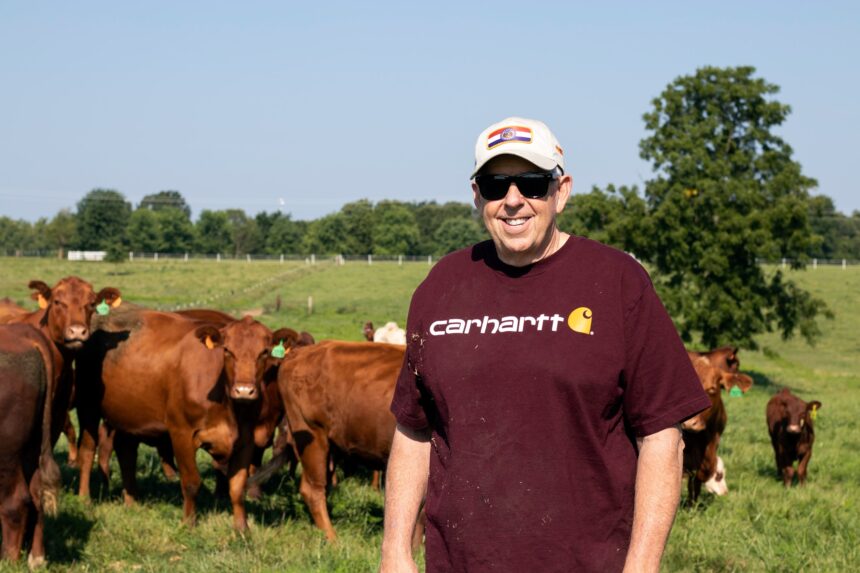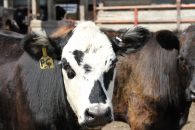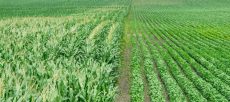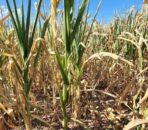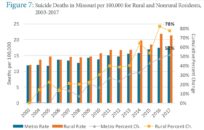Jefferson City, Mo. — Over half of the Show-Me State is showing signs of drought.
According to the state drought monitor, the southern portion of the state and a swath of the middle portion have been classified as abnormally dry, or dealing with a “moderate drought”. Parts of Carter, Oregon, Ripley and Howell counties, which sit on the Missouri-Arkansas border, have been classified as dealing with severe drought.
63% of the state is showing signs of drought.
The drought has had effects on hay growth in particular, according to the Missouri Department of Agriculture’s weekly market report released earlier this week. The hay market itself is still stable, with hay not being too hard to find or buy.
The real issue is that many farmers use the hay they cut to feed their livestock, including cattle.
“The bad part is dryness is causing some (cattlemen) to either already think of feeding something now or the more common solution is starting to cull cows and reducing herd size,” the report states.
This statement echoes the problem many cattlemen are facing across the state this summer. Should they cut hay and cull their herd? Or, should they wait for the possibility of more rain to cut hay later and keep their herd population?
For many farmers, it can be a tough choice.
The cattle market has become oversaturated with supply. An influx of culling cows from neighboring states also experiencing drought and the high number of cattle being culled within Missouri borders has caused the market to take a significant hit. This makes culling cattle a risky, and potentially costly choice.
“Many producers are being forced to reduce herd size as there just isn’t enough grass to maintain inventory levels, and feeding this early in the year isn’t feasible given lower hay production,” the report states. “The market took a big hit mid-week.”
Waiting for rain can be just as risky, as the drought has shown no signs of letting up in some parts of the state.
“There have certainly been years, without question, when people have had to start feeding hay in August. But to start feeding hay in June or the first of July, that’s pretty tough,” Christi Miller, communications director with the Missouri Department of Agriculture said. Miller and her Husband raise cattle in Miller County, near Eldon
“That’s hard to keep going all year long. If you’ve got to start feeding your hay and then hope that it lasts all through the winter — so that’s pretty tough,” she added.
Miller and the Department of Agriculture are aware of the difficult decision many cattlemen are facing in parts of the state. The choice to cull their cattle and sell for cheap in a saturated market or risk running out of food for their bovines.
“So now you have to make that decision — Do you feed hay? Do you find find a place where there is grass, something to feed those cows or do you send them?” Miller said. “The market is not quite as good, so nobody wants to give their cattle away. When there’s a rush on the market prices drop, so that’s a challenge for our producers too.”
When asked about what a farmer should do when faced with an ugly reality such as this, Miller invoked the classic philosophy many farmers are known for. Their optimism in the face of seemingly insurmountable odds.
“Farmers are the ultimate optimists, right? We’re the eternal optimist, whether we put a seed in the ground or we breed cows, or whatever we do, we’re always eternal optimists,” she said. “We’re in it because we love it. I mean, people in agriculture do it because they love it or you don’t stay in it for very long. So we certainly love it, but it is difficult decisions.”
The fix to the problem may not be as simple as getting a few inches of rain on any given day. While a big one-day downpour would be welcome, it would take a longer, sustained period of rainfall to produce an amount of hay that would put farmers’ minds at ease, Miller said.
The Missouri Department of Agriculture offers a hay directory, available to any farmer that needs hay. The purpose of the directory is to help any farmer in need of hay by helping them find available hay close to them. While not a fix-all solution, the directory is still a valuable resource to get hay to farmers that need it, and possibly save them from having to make hard decisions.
Gov. Parson is also stepping in, which is no surprise considering the former Polk County Sherriff owns and operates a cattle operation near Bolivar, Mo., in the southwest region of the state.
“This administration, the Department of Natural Resources, the Department of Agriculture, and the Department of Conservation are watching the drought situation across Missouri very closely,” Parson said. “We are ready to act if the situation worsens. As a farmer, I know the harmful effects a drought can have on farmers and Missouri agri-businesses, and as Governor, I will do what I can to assist in any way possible.”
The new drought index for Missouri will release later this week, providing new data on the ongoing conditions. The trend doesn’t seem to be stopping, as heat and dry weather are predicted to rage on through the end of the summer.
Editor’s Note: Gov. Parson announced a press conference regarding the drought at 3:45 p.m. Wednesday afternoon. The press conference will be held in the Governor’s Office in the Capitol building and will take place Thursday at 2 p.m.
Featured Image: Courtesy: Gov. Parson Facebook

